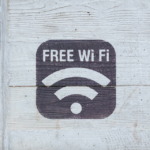Top 7 WiFi Finder Apps You Can Download Today
WiFi finder apps come in handy when you are trying to locate WiFi networks near you. In this guide, we look at the best WiFi Finder apps available in 2020.
What is a WiFi Finder App?
WiFi finders apps are mobile applications that recognize all available WiFi networks and provide as much information about them as possible.
Usually, WiFi finder apps show you WiFi name, security, brand, channel, and signal strength. These applications provide great utility for people who travel frequently.
What’s more, people who are very careful about the kind WiFi they connect to may find WiFi finder applications useful.
Top 7 Best WiFi Finder Apps

WiFi Map
WiFi Map is a WiFi finder app that is very useful for travelers. It comes with an interactive map, which shows all the hotspots available in a particular city. The app claims to have a network of about 100 million users who have accessed over 120 million hotspots around the globe.
The app displays detailed information even when the user is offline. When offline, users have access to WiFi hotspots available in a city and their passwords.
Cost: Free (Paid Pro version)
Platform: iOS
NetSpot
NetSpot is a desktop and mobile WiFi finder application that is known for its in-depth data collection and provision features. The app creates heatmaps of radio frequencies of networks for people who want that much detail.
Moreover, it has an intuitive user interface with a” Discover Mode” that makes it easy for you to find networks available in your range.
After finding a network, NetSpot provides a chat that covers the signal strength, signal to noise ratio, and information about the router.
Cost: Free
Platform: Android, iOS, Mac OS, and Windows.
TWC WiFi Finder
TWC WiFi Finder is most useful in the US. The nationwide TWC WiFi network from Time Warner has over 500,000 hotspots in the US. TWC WiFi Finder is an app that helps you locate these hotspots.
You get free access to high-speed internet through this app. In areas where it is a requirement to be a Time Warner’s customer, the app gives you access through the free trial program.
The application is free and is available on the popular mobile operating systems.
Cost: Free
Platform: Android and iOS
WiFi Password Finder
For people who constantly travel with their laptops and jump from one place to the other, you may have issues with remembering WiFi passwords. However, this is not a problem since your computer saves the login data of WiFi networks.
Sometimes you may want to send the login info to a friend who will be visiting the same place. Further, you may want to share the data from one device to another.
There are two options you could go with in this scenario. You can spend a lot of time searching through the depths of your settings or getting an application like WiFi Password Finder.
WiFi Password Finder is a desktop app that can retrieve passwords of WiFi networks you have connected with in the past.
Cost: Free
Platform: Windows
WiFi Analyzer
Another free Android WiFi finder application, WiFi Analyzer allows you to check various details of WiFi networks available.
WiFi Analyzer checks the signal strength of networks around you. It shows if signals are overlapping others to give you a heads up on resolving cross-frequency issues.
WiFi networks work in channels within the range of 2.4 GHz and 5 GHz. When two networks share the same channel, communication becomes difficult. This WiFi app gives you insights that help you avoid interference with other WiFi networks.
This app is more technical and is more useful to network administrators trying to find details about networks around them.
Cost: Free (Paid Pro version)
Platform: Android
Hotel Wi-Fi Test
Hotel Wi-Fi Test makes it easier for you to select the right hotel with perfect internet connectivity. The website collects data from users who visit various hotels. This data is then used to provide a guide on hotels before you make a reservation.
As usual, there is more data from cities with several visitors like New York, London, and Sydney. Further, Hotel Wi-Fi Test has browser extension that attaches a WiFi score to hotels in its database listed on sites like Trust Pilot, Expedia, and Hotels.com.
Cost: Free
Platform: Web
WiFiMapper (By Open Signal)
WiFiMapper, by Open Signal, is a popular WiFi hotspot identification app. It thrives on ann active community that updates the data of the app regularly with passwords and reviews.
WifiMapper boasts of over a list of 500 million hotspots. The app’s map is integrated with Foursquare, which gives users more details on amenities available in WiFi hotspot areas.
Unlike most mobile WiFi finder apps, WiFiMapper is not fully functional without internet connectivity.
Cost: Free
Platform: Android
There are several WiFi finder apps at your disposal. Depending on what you need, you could use a combination of the apps to get the best results.
What’s more, after you have connected to a public WiFi network, you need to ensure that you do not get compromised – WiFi Hacking: How to Protect Yourself in a Public WiFi Network.






